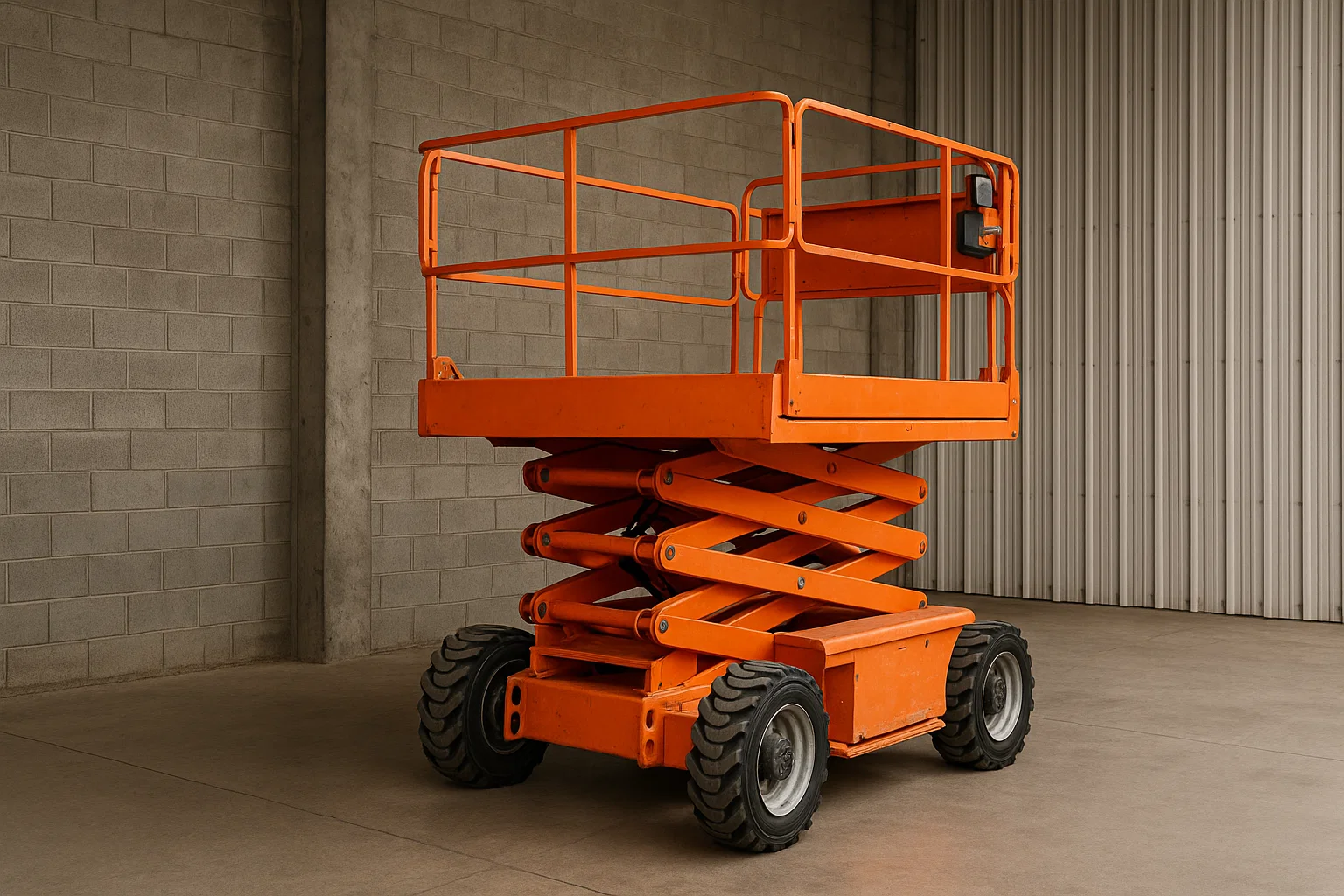
8 min read
Your facility manager just received approval for a major building renovation that requires overhead work ranging from HVAC installation in tight indoor spaces to exterior window replacement on a 12-story building. The contractor is asking what type of aerial access equipment you prefer, but you realize you don't understand the differences between boom lifts, scissor lifts, and other options. The wrong choice could mean accessibility problems, safety issues, and costly delays that derail your entire project timeline.
Quick Answer: Optimal aerial lift selection requires matching Mobile Elevating Work Platform (MEWP) capabilities to specific industry requirements, work environments, and task characteristics. Boom lifts excel in construction and high-reach applications, scissor lifts dominate indoor work requiring stability and capacity, vertical mast lifts optimize tight indoor spaces, push-around lifts handle light-duty tasks cost-effectively, and spider lifts access challenging terrain. Success depends on evaluating height requirements, horizontal reach needs, surface conditions, and operator training requirements.
For workplace managers responsible for jobsite safety and operational efficiency, selecting the appropriate Mobile Elevating Work Platform (MEWP) requires careful consideration of multiple factors beyond basic equipment availability. The aerial lift type you choose must align precisely with your team's task requirements, work environment characteristics, height specifications, and established safety protocols.
This comprehensive analysis examines the most common MEWP models, their operational strengths, and optimal deployment strategies across various industry applications.

Boom lifts represent the most versatile aerial access solutions for applications requiring both significant height capability and horizontal outreach to navigate around obstacles or access hard-to-reach locations. These sophisticated machines divide into two primary configurations, each optimized for different operational requirements.
Primary Industries: Construction sites, outdoor maintenance operations, steel erection projects, utility infrastructure work, and industrial facility maintenance requiring high-altitude access.
Articulating boom lifts, also known as knuckle booms, feature multiple joints that provide exceptional positioning flexibility. These joints enable the work platform to travel up, over, and around structural obstacles that would block straight-line access approaches.
Telescopic boom lifts, or straight booms, prioritize maximum horizontal outreach over obstacle navigation capabilities. Their single-arm design provides superior reach distances while maintaining excellent stability throughout the extended operating envelope.
Experts at BigRentz recommend articulating booms for indoor applications or confined work areas where obstacle navigation takes priority, while telescopic booms make more sense for tasks requiring maximum outreach in open environments.
Height capabilities reaching up to 185 feet make boom lifts suitable for extreme elevation requirements that exceed all other aerial platform options. This exceptional height capability, combined with substantial horizontal reach, enables access to locations impossible with alternative equipment types.
Articulated arm systems excel at reaching over structures, around obstacles, and into confined spaces where straight-line access proves impossible. The multiple joint configuration provides positioning flexibility that dramatically expands accessible work areas.
Rugged construction and all-terrain capabilities enable effective operation on uneven surfaces and challenging outdoor conditions where other equipment types struggle with stability or mobility. Four-wheel drive models and oscillating axles provide superior performance on construction sites and rough terrain.
Different certification requirements apply to telescopic and articulating boom configurations, making proper operator training important for safe, compliant operations across both equipment types.
ANSI A92.20 MEWP standards provide detailed requirements for boom lift design, operation, and safety systems that govern equipment selection and operator training programs.
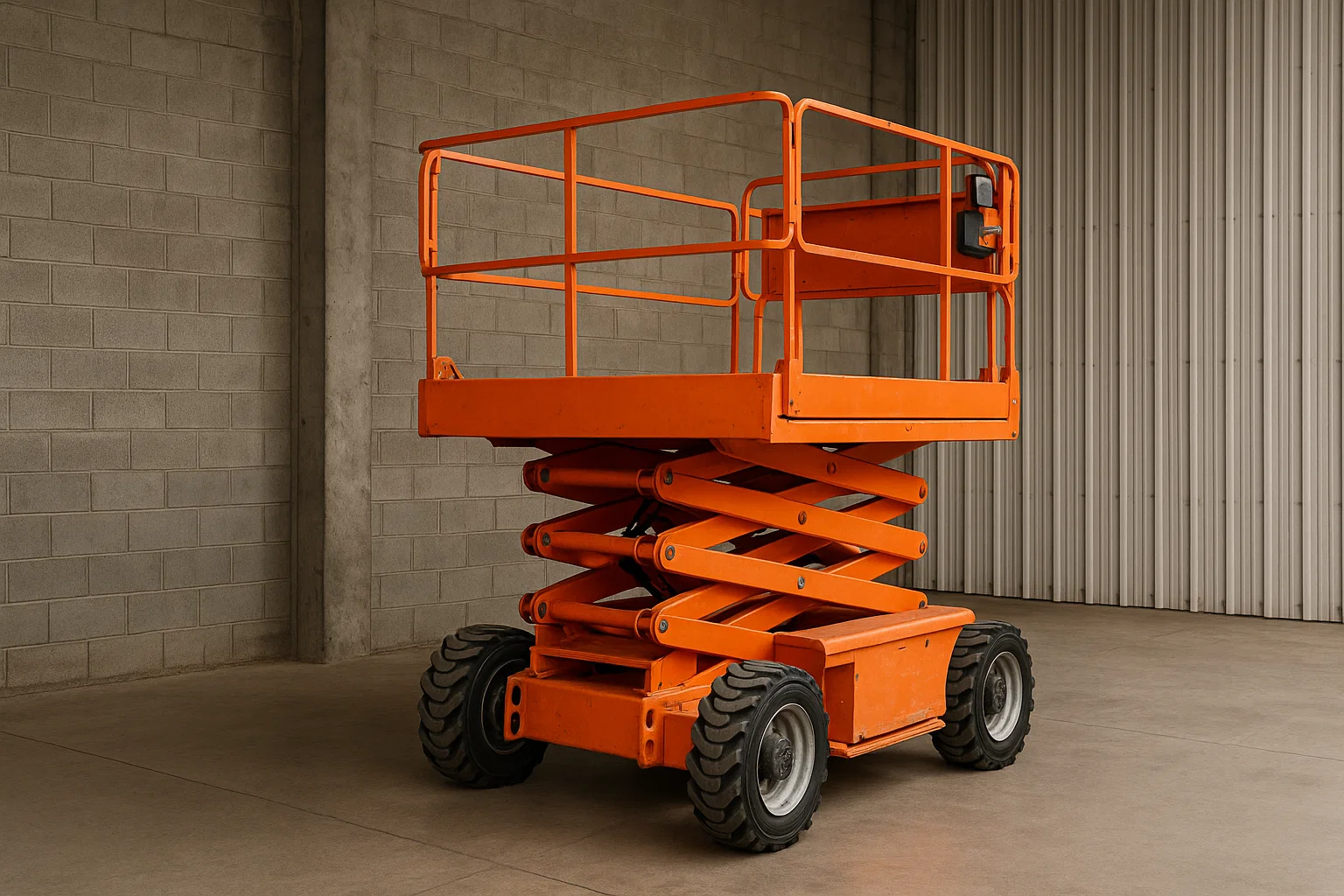
Scissor lifts excel in applications requiring stable, spacious work platforms capable of supporting multiple operators and substantial tool loads. Their vertical-only movement provides excellent stability while accommodating heavy work requirements that would overload other platform types.
Primary Industries: Indoor construction projects, electrical installation work, HVAC system installation and maintenance, facility maintenance operations, and applications requiring multiple workers or heavy equipment on elevated platforms.
Large platform dimensions distinguish scissor lifts from other aerial access options by providing ample space for tools, materials, and multiple workers. This capacity advantage makes scissor lifts particularly valuable for tasks requiring extended work periods at elevated positions.
Electric models designed for indoor use offer clean, quiet operation suitable for occupied buildings, healthcare facilities, schools, and other environments where emissions and noise must be minimized. Zero-emission operation supports indoor air quality while reducing operator fatigue from exhaust exposure.
Diesel-powered units provide rugged outdoor performance capabilities while maintaining the stability advantages of scissor lift design. These models work effectively on construction sites and outdoor maintenance applications where level surfaces allow safe operation.
Compact electric models navigate narrow aisles and confined indoor spaces while providing vertical access up to 50 feet or more. This combination of maneuverability and height capability makes them ideal for warehouse and retail maintenance applications.
Excellent platform stability results from the wide base and balanced lifting mechanism that maintains level platforms throughout the operating range. This stability advantage reduces operator fatigue while improving productivity for precision work at elevation.
OSHA provides specific guidance for scissor lift operation and safety requirements that address the unique characteristics and applications of these vertical access platforms.
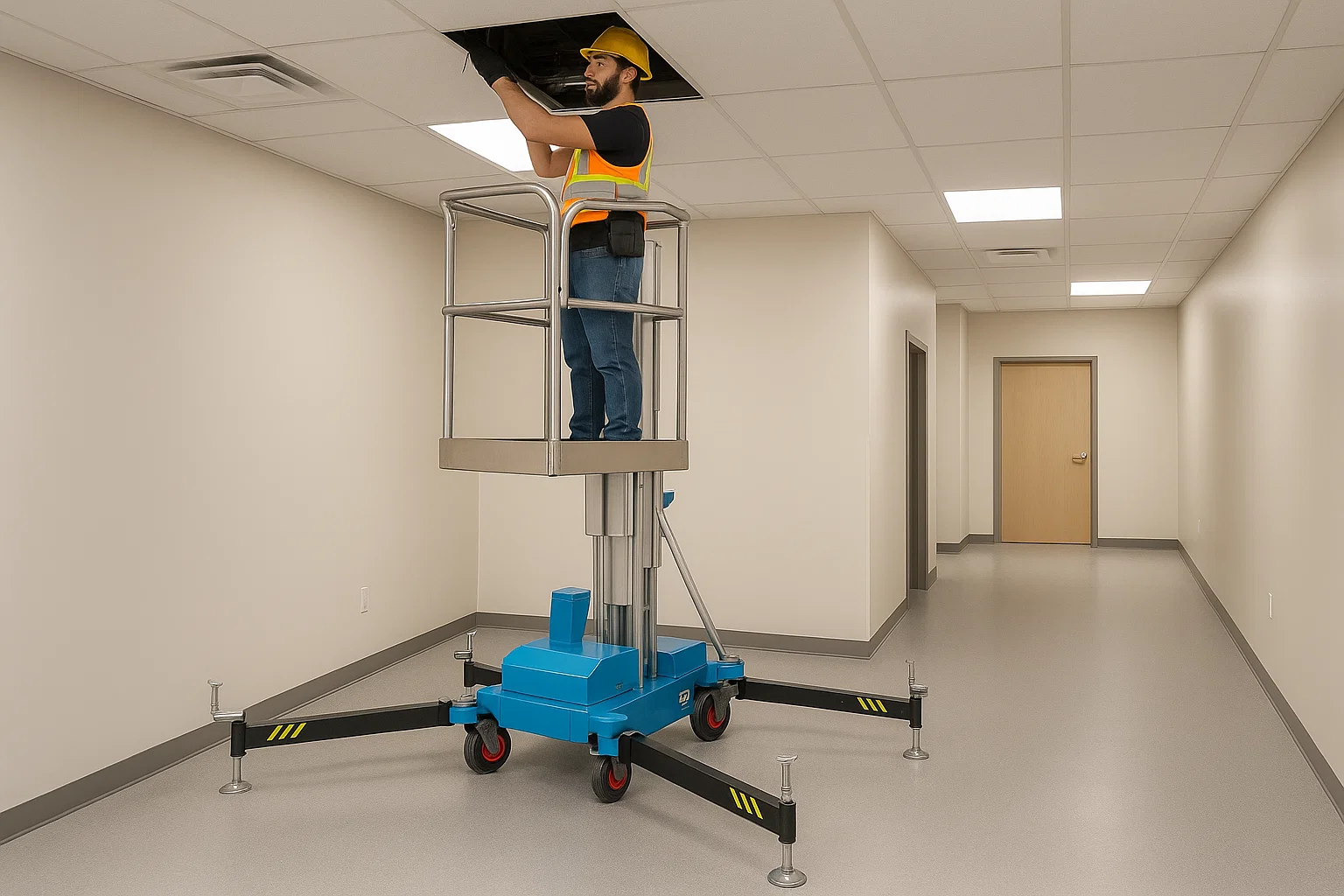
Vertical mast lifts optimize indoor applications where space constraints and ceiling height limitations require compact, maneuverable access solutions. These specialized units prioritize portability and ease of use over maximum height capability.
Primary Industries: Retail facilities, educational institutions, low-ceiling warehouses, maintenance operations, and indoor environments where compact access equipment provides advantages over larger alternatives.
Compact footprint designs enable operation in tight indoor environments where larger equipment cannot fit or maneuver effectively. Narrow frame construction allows passage through standard doorways and between storage racks without requiring facility modifications.
Simple control systems and quick deployment capabilities make vertical mast lifts ideal for facilities where operators need immediate access without complex setup procedures. This simplicity reduces training requirements while improving operational efficiency for routine maintenance tasks.
Height capabilities typically reaching 30 feet provide sufficient elevation for most indoor maintenance, installation, and service applications. While limited compared to boom lifts or large scissor lifts, this height range addresses the majority of indoor access requirements effectively.
Single-operator platforms optimize these units for individual tasks rather than crew-based work, making them cost-effective alternatives to larger equipment when crew size doesn't justify platform capacity. This focused approach reduces operating costs while maintaining safety standards.
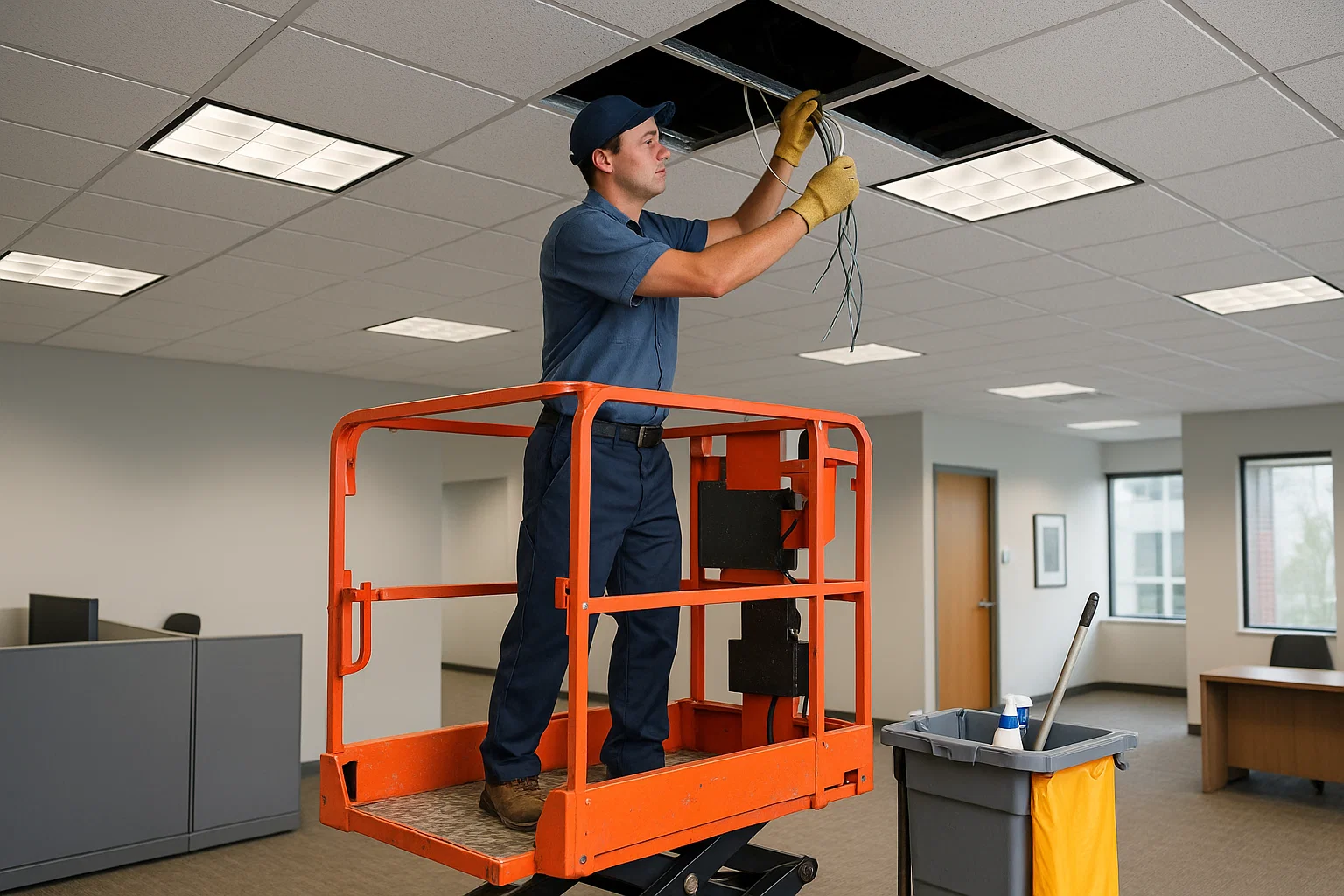
Push-around lifts provide safe ladder alternatives for light-duty indoor tasks where manual positioning and minimal setup time take priority over automation or maximum capability. These simple systems excel in applications requiring frequent repositioning and immediate availability.
Primary Industries: Light-duty indoor maintenance, lighting replacement, signage installation, retail display work, and applications where portability and low cost outweigh automation benefits.
Manual positioning systems eliminate power requirements while providing maximum portability for applications requiring frequent movement between work locations. This simplicity reduces maintenance needs while supporting immediate deployment without setup delays.
Affordable acquisition and operating costs make push-around lifts attractive for organizations with limited budgets or occasional elevated access requirements. The low investment threshold enables access to safe elevation without major capital commitments.
Minimal storage requirements allow these compact units to be stored in small spaces without interfering with normal facility operations. This storage efficiency becomes particularly valuable in crowded facilities where equipment storage space is limited.
Low maintenance demands result from simple mechanical designs without complex hydraulic, electrical, or engine systems. This reliability advantage reduces long-term operating costs while maximizing equipment availability.
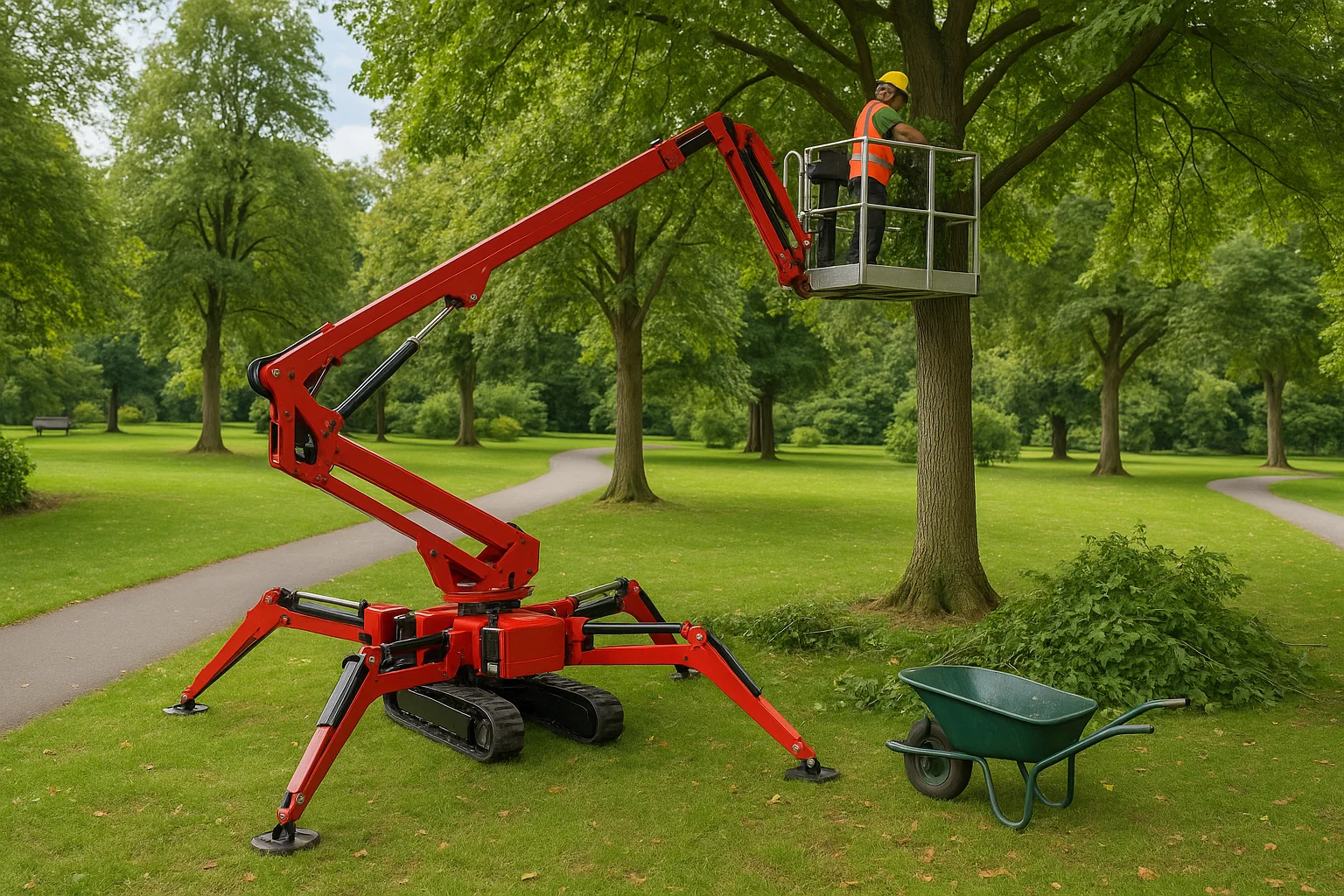
Spider lifts combine articulating boom capabilities with specialized mobility systems that enable operation in locations inaccessible to conventional aerial platforms. Their unique design addresses specific applications where standard equipment cannot operate safely or effectively.
Primary Industries: Tree care operations, historic building maintenance, atrium work, greenhouse operations, and outdoor applications involving sensitive surfaces or challenging terrain conditions.
Articulated boom systems mounted on compact, tracked bases provide exceptional positioning flexibility while maintaining low ground pressure for delicate surface protection. This combination enables operation on finished flooring, landscaping, and other surfaces that would be damaged by conventional equipment.
Lightweight construction allows operation on weight-sensitive structures, elevated decks, and surfaces with limited load-bearing capacity. This capability expands access options in historic buildings and specialized facilities where heavier equipment would create structural concerns.
Tracked mobility systems provide stability and traction on inclined surfaces, soft ground, and uneven terrain where wheeled equipment would struggle or require stabilization. These mobility advantages enable access in challenging outdoor environments.
Remote control operation capabilities allow precise positioning and movement without requiring operators to remain on the machine during positioning activities. This feature improves safety while enabling more precise equipment placement in confined areas.
Telescopic boom lifts and diesel scissor lifts provide the height capabilities and rugged performance needed for outdoor construction environments. These units handle the demanding conditions, substantial heights, and heavy-duty applications common in construction projects.
Electric scissor lifts and vertical mast lifts deliver the indoor mobility, clean operation, and appropriate scale needed for warehouse and retail maintenance activities. Quiet operation and zero emissions support work in occupied facilities without disrupting normal operations.
Push-around lifts and vertical mast lifts handle routine overhead maintenance tasks without the complexity and cost of larger equipment. These solutions provide safe access for lighting, ceiling, and system maintenance in commercial facilities.
Articulating boom lifts and spider lifts provide access capabilities without damaging sensitive terrain, landscaping, or root systems. Specialized mobility features enable operation in areas where conventional equipment would cause unacceptable damage.
Truck-mounted units and telescopic boom lifts excel in roadside applications and high-reach utility infrastructure work. The combination of mobility and extreme height capability addresses the unique requirements of utility maintenance and installation.
All MEWP operations require proper operator training and certification regardless of equipment type or application. ANSI A92 and OSHA standards mandate specific training requirements that address equipment-specific characteristics and workplace hazards.
Weather conditions significantly impact aerial lift safety and operational capabilities. Manufacturer guidelines typically prohibit operation during high winds, icy conditions, or severe weather that could compromise stability or operator safety.
Movement while elevated requires specific equipment ratings and operator training, as only certain models are designed for travel with elevated platforms. Electric scissor lifts commonly allow movement while elevated, but operators must verify capabilities and receive appropriate training.
Successful aerial lift selection requires matching equipment capabilities to specific task requirements, work environments, and safety considerations rather than choosing based on availability or initial cost alone. The right equipment improves productivity while maintaining safety standards throughout project execution.
Each MEWP type excels in particular applications, making careful evaluation of operational requirements more important than general equipment preferences. Understanding these specialized applications helps guide decisions that optimize both safety and operational effectiveness.
Proper operator training and certification are mandatory for all aerial lift operations, with specific requirements varying by equipment type and application. Investment in quality training programs supports both regulatory compliance and operational safety objectives.
Q: What training options are available for different MEWP types?
A: Prosafe offers equipment-specific operator certification and train-the-trainer programs that address the unique requirements of different aerial lift models. Our training complies with ANSI A92 and OSHA standards while addressing specific operational characteristics and safety requirements. Learn more about MEWP training requirements and certification programs.
Q: What's the difference between a MEWP and an aerial lift?
A: "MEWP" (Mobile Elevating Work Platform) is the modern, standardized term that encompasses all aerial lifts including boom lifts, scissor lifts, and other elevated access equipment. This terminology replaced older classifications to standardize training and safety requirements across the industry.
Q: Do all MEWP operators need training and certification?
A: Yes, according to ANSI A92 and OSHA standards, all MEWP operators must receive training and certification specific to the type of lift they operate. Different equipment types have unique operational characteristics that require specialized instruction.
Q: Can MEWPs be used in rain or snow?
A: Weather conditions significantly impact both safety and equipment function. Manufacturer guidelines typically prohibit operation during high winds, icy conditions, or severe weather. Always check specific equipment manuals and follow manufacturer recommendations.
Q: Is it safe to move aerial lifts while elevated?
A: Only certain models are rated for movement while elevated, typically electric scissor lifts designed for this capability. Operators must verify this specification in the equipment manual and receive proper training before attempting movement while elevated.
Select the optimal aerial lift equipment for your industry and operational requirements with expert guidance that evaluates all safety and performance factors. Our equipment specialists help assess your specific access needs and recommend solutions that maximize productivity while ensuring regulatory compliance. Call (866) 350-9156 or request a consultation to determine the best aerial access strategy for your facility today.